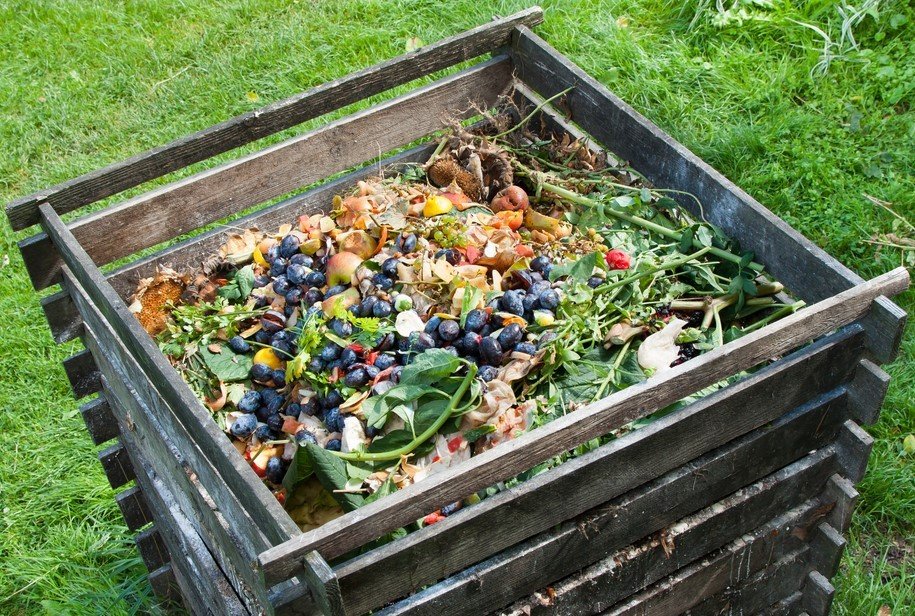How to Start Your Own Composting Pile
In the world of gardening, compost is known as “black gold”, an amendment that provides remarkable benefits to both the soil and the plants growing in it. Through natural processes, unwanted waste is broken down by bacteria, creating organic material rich in nutrients and beneficial microorganisms that increase soil fertility and bolster healthy root development in plants. As gardeners become aware of sustainable gardening methods, more are opting to compost their own waste using the following techniques and steps.
Different Ways to Compost
One of the great things about composting is the flexibility it offers you in regards to the method/system you follow. Choose a method that fits your budget and backyard setup.
A. Piling is a simple, common process. Materials are literally heaped into a pile and turned periodically to aerate.
B. Open bins are a partial structure allowing for ventilation and aeration while keeping materials confined. One side is easily accessible to add materials and turn the pile.
C. Enclosed bins completely enclose the process via a lid and eliminate both the sight of a compost pile and the smell.
D. Tumblers are a unique, efficient type of enclosed compost bin. Cylindrical in nature, they have a handle that allows them to be “turned” or tumbled easily.
Composting Basics
For simplicity sake, most decomposable materials are carbon or nitrogen-based (to varying degrees); these two types of materials need to be in the proper balance in your compost pile for decomposition to occur.
Carbon-based materials give compost its light, fluffy body and typically consists of items that are more wood-based, or fibrous: dried leaves, branches, stems, sawdust, tree bark, corn stalks, wood ash, pine needles, peat moss. These carbon-based materials are considered “brown” and provide food for the bacteria and microorganisms.
Nitrogen or protein-rich material (manures, food scraps, green leaves) provides the raw materials (amino acids and proteins) needed for the enzymatic reactions that must occur. They are considered “green” material.
Steps to Composting
Starting your own compost pile entails more than throwing yard and table scraps into a heap. Following the subsequent steps will aid in producing high-quality compost.
1. Clear a space in your yard or garden, exposing the bare soil. This allows earthworms and microorganisms to come up out of the soil into the pile, driving the decomposition Process.
2. Build a layer of straw or twigs as a base. A few inches of these materials helps to aerate the pile, providing good drainage.
3. Add layers of materials to be composted one at a time, alternating between brown and green materials.
4. Incorporate a nitrogen source. Manure or grass clippings work best; their purpose is to active the pile, starting the decomposition.
5. Keep the pile moist. Water it occasionally, or let rainfall naturally add moisture. It’s recommended that the materials should feel like a damp sponge, but unable to squeeze water out if you grab a handful.
6. Turn the compost pile every couple of weeks with a shovel or pitchfork, or spin the tumbler. This aerates the materials, providing oxygen to the bacteria breaking down the waste, and distributes fresh materials within the pile.

Dos and Don’ts of Composting
To help speed up the decomposition process, keep in mind the following “do’s” and “don’ts”.
DO
• Chop all materials into smaller pieces if feasible.
• Cover the top of the pile with plastic sheeting or plywood if you live in a rainy climate.
• Sprinkle in some nitrogen fertilizer if your brown ratio is too high.
DON’T
• Don’t keep food waste at the top of the pile where it can attract rodents.
• Don’t put the roots of plants into the pile.
• Don’t add diseased plant tissue or weeds.
Materials to avoid in your compost pile:
• Raspberry brambles
• Large branches or sticks
• Pet waste or used litter
• Meat
• Bones
• Fats or oils
• Pressure treated wood
• Black walnut leaves or twigs
How to Tell When Your Compost is Ready
When the composting process has finished, and your compost is ready to use in the garden, it will look and feel like really, really dark soil with a deep, earthy smell. The pile will have shrunk to about one-half of its starting size, and none of the original materials will be recognizable. Once all of these things have occurred, it’s time to start incorporating it into your soil.
Composting your own yard and kitchen waste allows you to carefully monitor the process and the materials that go into the finished compost. The different ways to compost offer flexibility based upon the space you have and how much effort you want to put into it. Following the basics above helps to ensure the process runs smoothly without any hiccups!
Matt Hagens owns Yard Care Life where he writes about lawn and garden care. He has developed a passion for helping other DIY’ers get the most out of their yards. He lives in Pennsylvania with his wife and 3 daughters who love to help out in the yard as well.


